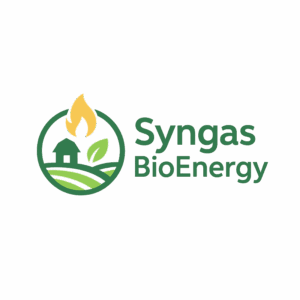
Food security for Humanity -
bioEnergy for our Farmers
We are an Energy Company that builds and operates micro-Energy Grids for Farmers
A Growing Waste Problem Farmers Can't Afford to Ignore
Every day, large-scale farms generate thousands of tons of manure — a costly, environmentally sensitive challenge. In states like California, where environmental regulations are the strictest in the country, farmers are facing rising costs and shrinking margins just to manage waste. Methane emissions, nitrogen runoff, and lagoon failures threaten air, water, and soil — and compliance is only getting harder. We believe this is more than a waste problem. It’s a barrier to food production, climate goals, and farm survival.
Food costs keep esculating, especially high quality organic food which we all need to reduce the onslught of disease like diabetes. How can we bring the costs down ad feed our citizens with the quality they deserve?
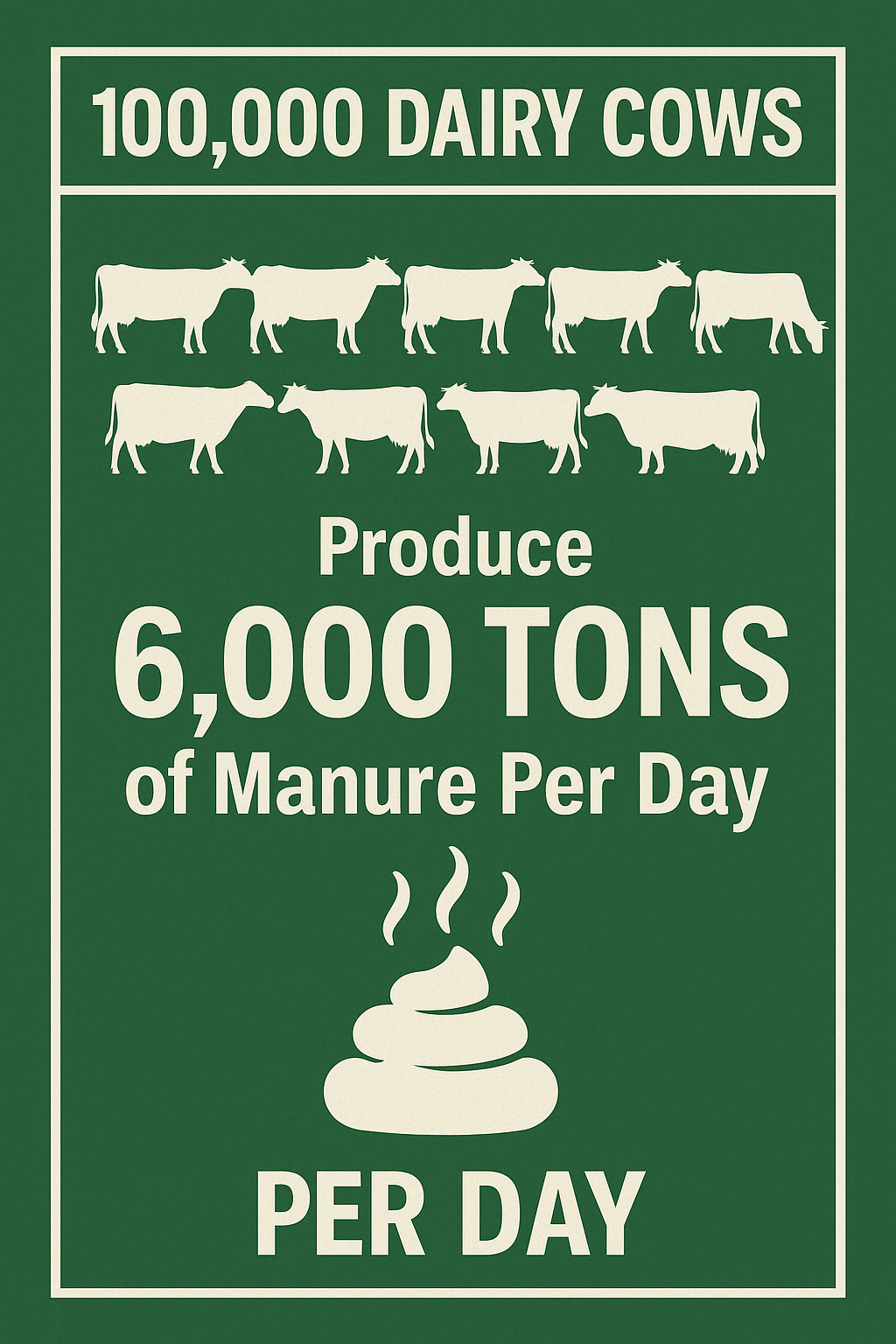
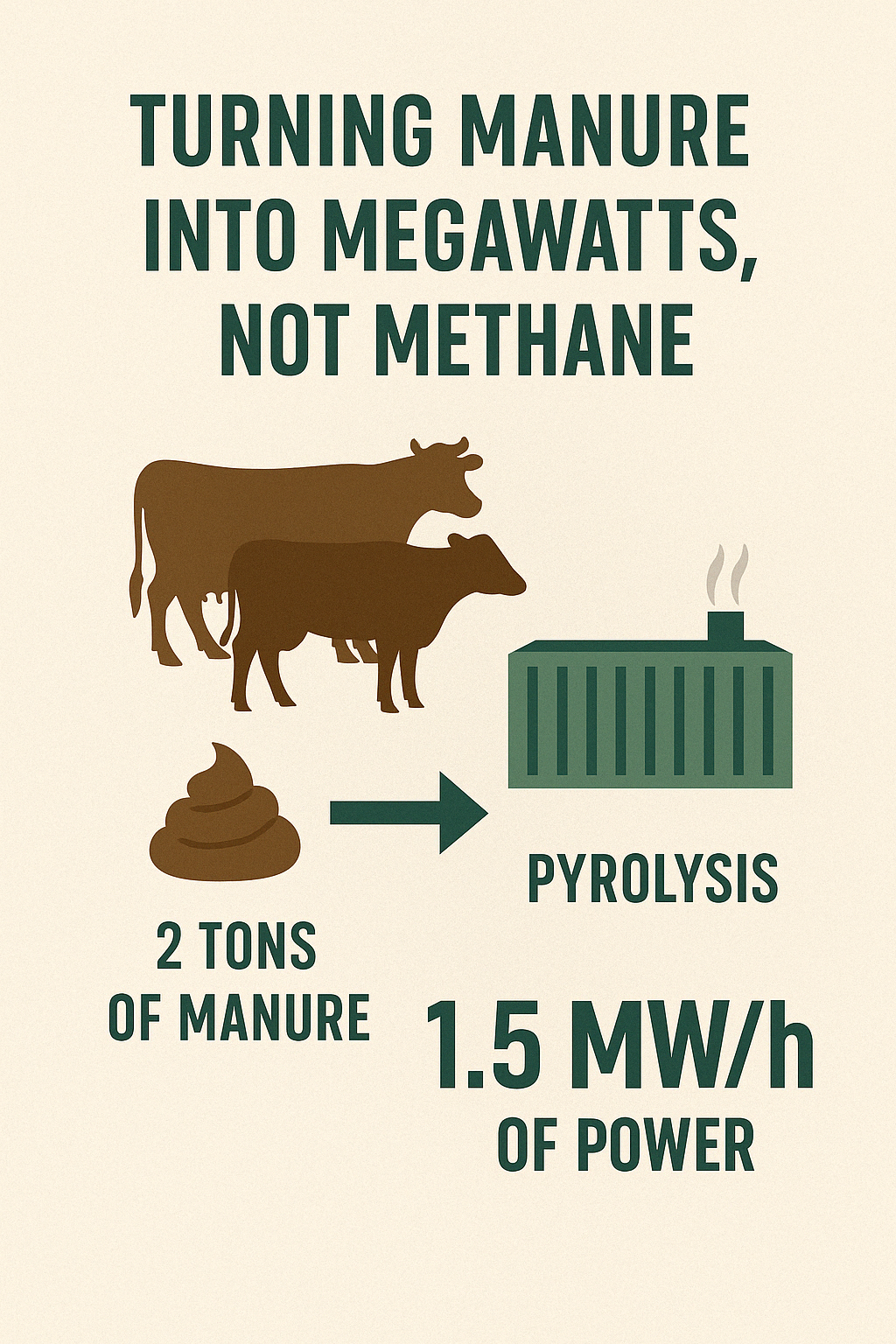
Turning Manure into Megawatts, Not Methane
With our Syngas BioEnergy bioReactor, we transform 2 tons of waste per hour into 1.5 megawatts of thermal energy, replacing fossil fuel dependence with clean, on-site, carbon-negative power. Farmers no longer have to haul, store, or hope for the best — they power their own operations while eliminating a major liability. Our system creates real-time energy from real-time waste, every hour, every day.
Feeding the Soil and Fueling the Herd
Biochar isn’t the only byproduct. Our process also produces syngas, bioChar and nutrient-rich liquids that support algae cultivation — which can be recycled as organic fertilizer. This closes the loop: waste feeds energy, energy feeds soil, and the soil feeds the food that nourishes the herd. Our system turns liability into life — regenerating soil, reducing synthetic inputs, and reinforcing the food-energy-soil cycle at the farm level.

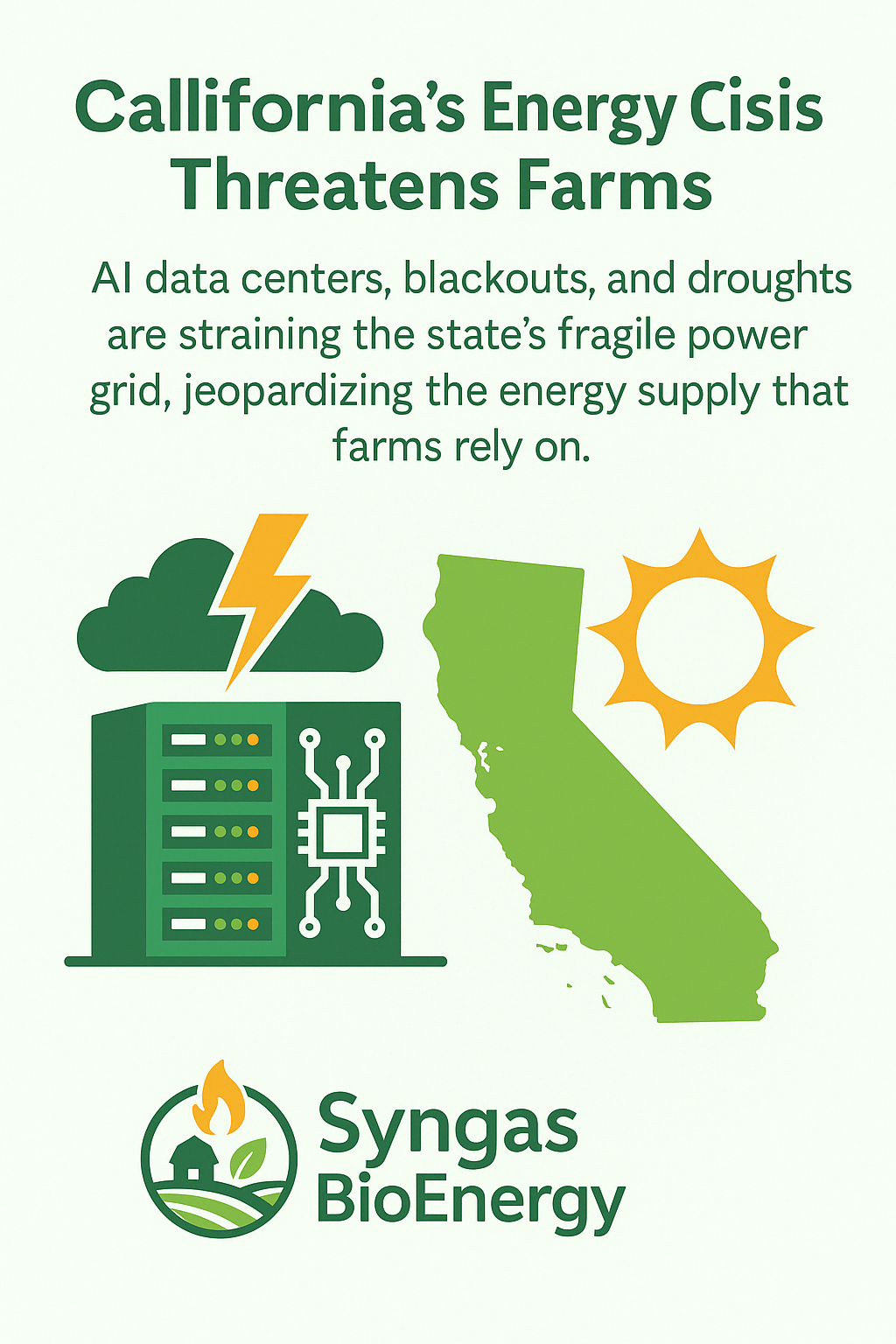
Energy Security for our Farmers
California’s fragile power grid is nearing a tipping point. Between rolling blackouts, extreme droughts, and now massive energy demand from AI data centers, the state’s farms — which feed the nation — are at increasing risk. Power interruptions threaten irrigation, refrigeration, livestock care, and harvest operations. At Syngas BioEnergy, we put energy security back into the hands of farmers. Our containerized bioReactor units convert waste directly into renewable thermal power — producing up to 1.5 MW/hour per container right on-site, with no grid dependency. As AI strains California’s energy supply, we ensure farms stay productive, resilient, and powered by their own land.
California has a huge problem and they are not alone.
Manure pollution is one of the most severe yet under-acknowledged environmental crises in California. With nearly 2.4 million cows, the state produces almost 128,800 tons of manure daily, much of it stored in massive open-air lagoons that emit methane, ammonia, and other harmful gases, contributing to both climate change and local air quality issues. Nitrate runoff contaminates groundwater, threatening rural communities and ecosystems, while the regulatory burden of managing this waste—especially under California’s strict environmental laws and high energy costs—places enormous financial strain on farmers. As a result, waste is no longer just a byproduct — it’s a growing liability. And California isn’t alone. Texas, Wisconsin, Idaho, New York, and Pennsylvania are home to some of the largest cattle herds in the country, facing similar challenges but with less regulatory oversight and lower power prices. These states represent a massive opportunity for scalable, on-site bioenergy solutions that solve waste, energy, and environmental pressure in one closed-loop system.


California Total Cattle bioEnergy Market
California represents one of the largest and most concentrated manure-to-energy markets in the world, with over 2.4 million dairy and beef cows producing nearly 128,800 tons of manure per day. This waste stream, under strict environmental regulations, creates both a cost burden and an untapped energy resource. With our Syngas BioEnergy bioReactors converting just 2 tons of manure into 1.5 MWh of power, the total potential energy output exceeds 5.6 million MWh annually — translating to an estimated $7.08 billion in annual average energy revenue at $0.20 per kWh. Deploying approximately 2,683 bioReactors statewide would unlock this market, giving California farmers energy independence, reducing emissions, and transforming a waste liability into clean, localized power.
Target market - 4 counties - $4.8 billion in potential Energy Sales
The Central Valley of California—specifically Tulare, Merced, Kings, Stanislaus, and Kern counties—represents the most concentrated livestock region in the state, accounting for 68.4% of all dairy and beef cattle. With over 1.6 million cows producing nearly 90,000 tons of manure daily, this region alone has the potential to generate more than 24 million megawatt-hours of clean energy per year using Syngas BioEnergy’s decentralized bioReactor systems. At just $0.20 per kWh, this translates to over $4.8 billion in annual energy revenue. By focusing exclusively on this targeted zone, we can deploy at scale, reduce transport and installation costs, and build a high-density, high-impact energy corridor that transforms agricultural waste into power—proving that food-producing regions can also lead the renewable energy transition.
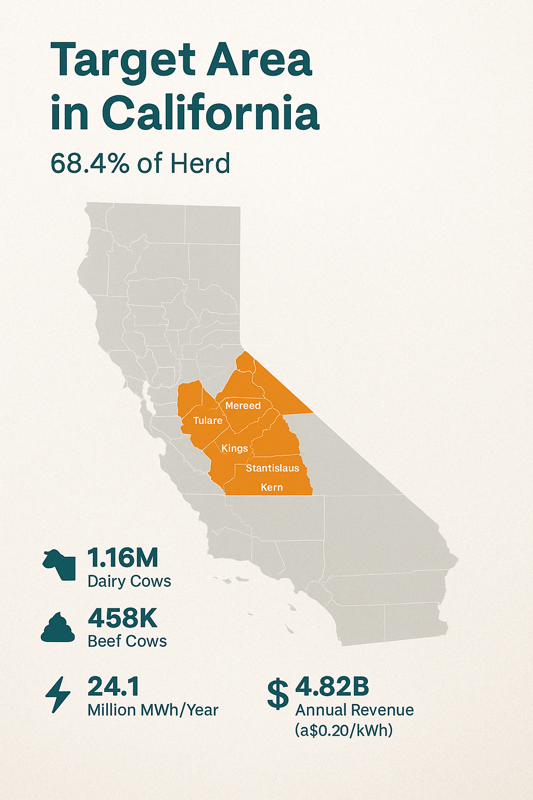
Technology: Our SynGas bioReactors convert 2 Tons of Manure into 1.5 MWh of power every hour.

Complete bioEnergy Solution - Waste to Energy right at the Source
At Syngas BioEnergy, we don’t just build waste-to-energy systems — we design and deploy fully integrated on-farm power grids. By placing our containerized bioReactors and generators directly at the source of waste, we create decentralized energy hubs that convert manure, crop residue, and processing byproducts into continuous, renewable power. On large-scale agricultural operations spanning 1,000 acres or more, waste and energy demands are not evenly distributed — feedlots generate massive waste but use minimal electricity, while processing plants, cold storage, and packaging lines require intense, round-the-clock energy with little to no waste output.
To solve this imbalance, we build a custom mini power grid across the farm — often connecting 20 to 30 bioReactors to 3 to 4 high-demand facilities. These distributed energy nodes are linked through a localized transmission system that intelligently routes power to where it’s needed most, creating a closed-loop, self-sufficient energy infrastructure. The result: no grid dependency, no power outages, and a dramatic reduction in operating costs and emissions — all powered by the farm’s own organic waste.

Modular Power Grid, locate the bioReactor at the source of the bioWaste
The Syngas BioEnergy bioReactor is a fully self-contained waste-to-energy unit engineered inside a standard 40-foot shipping container. Each reactor is prebuilt in our factory, rigorously tested, and delivered ready for rapid deployment — making it one of the fastest, most portable solutions for on-site power generation. This rugged, modular design allows farms to scale energy production like building blocks, placing reactors exactly where waste is generated, without the need for complex construction or permitting delays. Whether deployed individually or as part of a 30-unit network, each bioReactor acts as a decentralized energy module feeding the broader on-farm power grid — making speed, flexibility, and off-grid independence the defining features of our energy infrastructure solution.
bioReactor Processes: Multiple Processes Produce Syngas for Power and BioChar
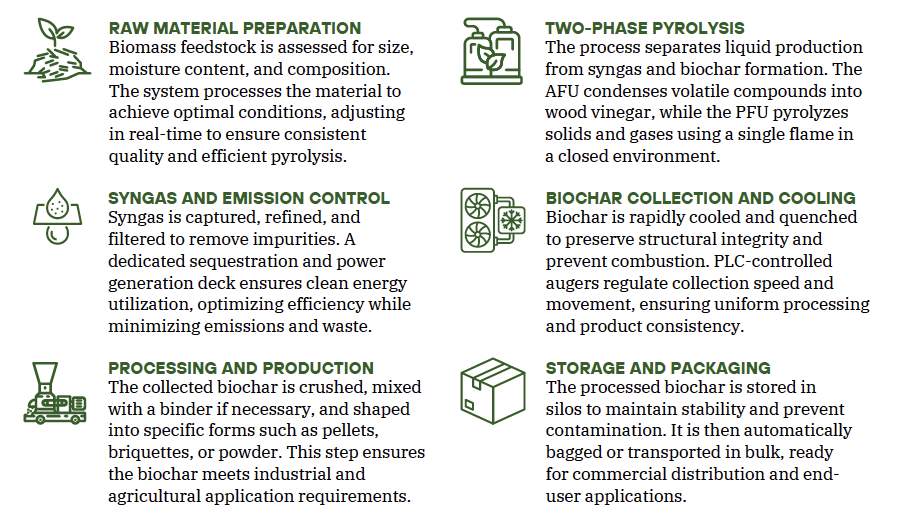
Real time detection of viruses and bacteria at the point on entry is critical for biodefense
The heart of our system is the pyrolysis process — a high-temperature, low-oxygen thermal conversion that transforms organic waste into three valuable outputs. First, it produces syngas, a clean, combustible gas used to power generators and supply on-site energy. Second, it yields biochar, a carbon-rich solid that can be mixed with fresh manure to enhance its energy density and combustion efficiency in future cycles, creating a regenerative fuel loop. Third, it emits nutrient-rich gases and vapors ideal for feeding algae cultivation systems, which are harvested to produce organic fertilizer and high-protein feed for livestock. This closed-loop process maximizes every molecule of waste, turning environmental liabilities into power, profit, and productivity.
News
- All
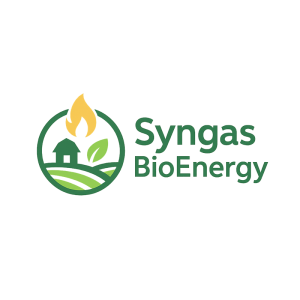
Strategic partnership brings modular, carbon-negative power to agriculture and ranching — starting in the California Central Valley SAN JOAQUIN VALLEY, CA – April 22, 2025—China New Energy Group Company (OTC: CNER), a publicly traded clean energy infrastructure and finance company, today announced that it has entered into a strategic agreement to commercialize the syngas technology developed by BioEnergy Solutions Inc., an Alberta, Canada renewable energy developer, to launch...
Management
Team

Gary Bartholomew - CEO and Director
Gary Bartholomew, a graduate of the University of Waterloo, brings extensive experience in innovation-driven leadership to his role as Executive Director of Thrive Precision Health Research. With a strong background in technology development and commercialization, Gary leads the nonprofit’s mission to advance groundbreaking solutions for managing and slowing the progression of metabolic disorders, including type 2 diabetes. Under his guidance, Thrive conducts clinical studies and validations to bridge the gap between cutting-edge research and real-world application, empowering global healthcare systems with effective, evidence-based tools to combat chronic diseases. Gary’s passion for driving impactful change inspires the organization’s collaborative efforts to transform lives through science and innovation.
Contact
Us
China New Energy Group Company
The bioEnergy Company
Address:
5428 South Regal St. Unit 30954
Spokane, WA, 99223
e: investors.cner@gmail.com